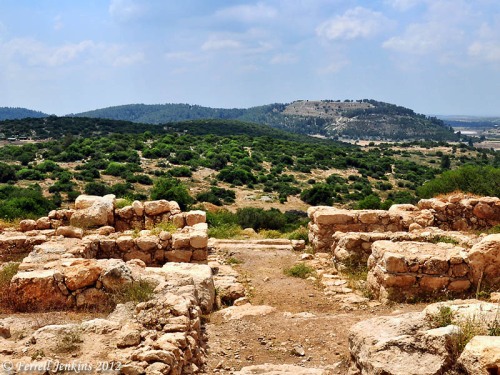The grinding of grain was an important part of the life of people in Bible times. After the grain was gathered from the fields it had to be threshed. This was done by running a threshing sledge over the stalks of grain on the threshing floor (2 Samuel 24:22). The stalks, now cut into small pieces, was then winnowed with “shovel and fork” to separate the chaff from the good grain (Isaiah 41:16; Ruth 3:2; Luke 3:17; Psalm 1:4). Next came the sifting of the grain to further removed small pieces of debris. Jesus makes reference to this practice when he predicts Peter’s denial:
“Simon, Simon, pay attention! Satan has demanded to have you all, to sift you like wheat, (Luke 22:31 NET)
After that, there was still hard work to be done. The grain had to be ground between two millstones. The photo, below taken at The Museum for Bedouin Culture at Kibbutz Lahav in the Negev, shows the process.

Grinding grain. Exhibit at The Museum of Bedouin Culture at Kibbutz Lahav in the Negev. Photo by Ferrell Jenkins.
There will be two women grinding grain together; one will be taken and the other left. (Luke 17:35 NET)
There was still the necessary kneading before the bread could be baked and eaten.
I am worn out. I think I will run down to the store and get a loaf of bread.













You must be logged in to post a comment.